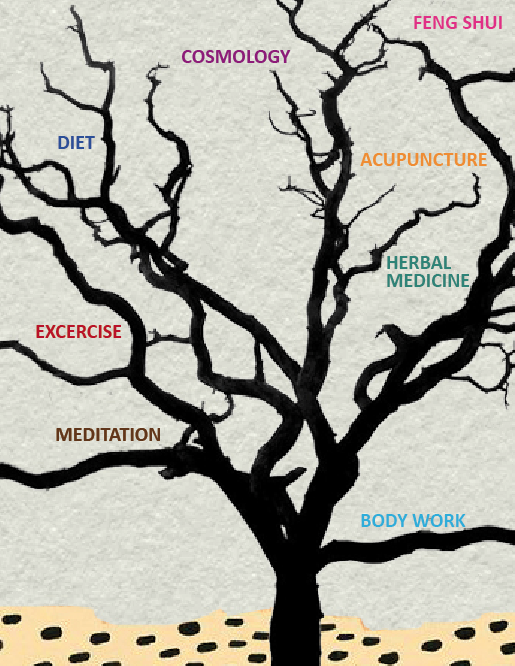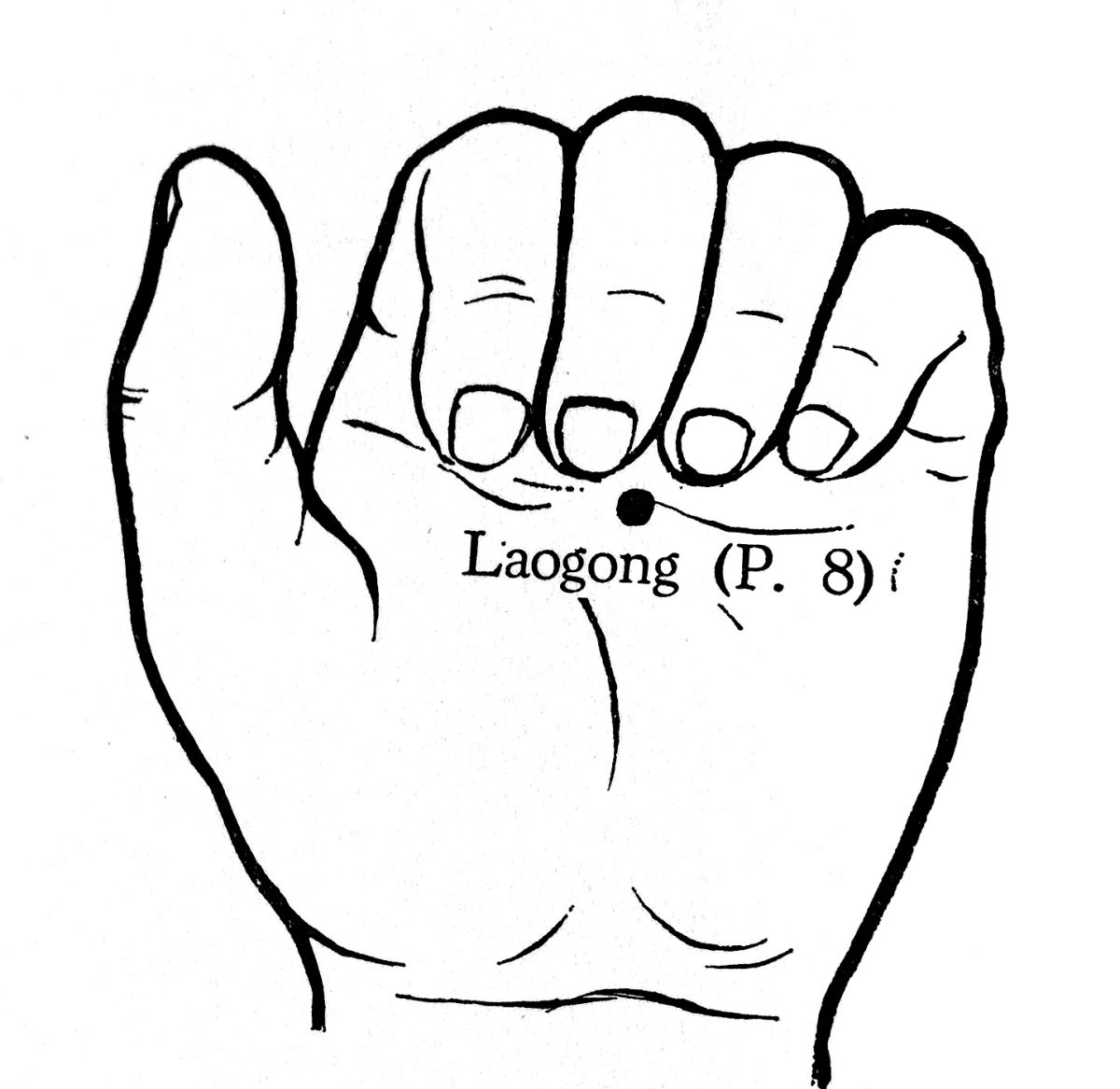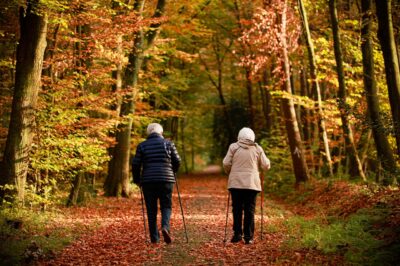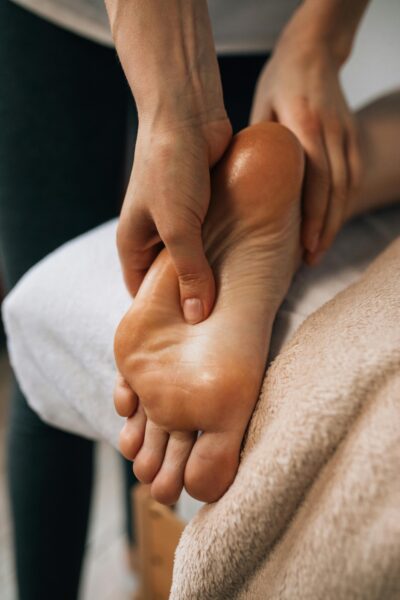Cultivate your Life with Qigong
 picture from desaseni.com
picture from desaseni.com“You should sit in meditation for twenty minutes every day, unless you are too busy. Then you should sit for an hour.”
— Dr. Sukhraj Dhillon
Qigong, which translates as “breath cultivation,” is one of the Eight Branches of Traditional Chinese Medicine (TCM) and has been practiced in China for thousands of years. Qigong uses internal and external movements, coupled with breathing, in order to encourage circulation (the movement of blood, qi, and lymph) throughout your body. External movement is breath awareness, and internal movement is focus, or meditation. This flow in Chinese medicine is known as “Neigong”, which translates as “internal power.” In TCM it is believed where there is pain or disease, there is stagnation, a blockage in the free flow of qi (energy) or blood. If we are able to create movement and clear the stagnation, we will be free from pain and disease. As we master the art of Qigong we will begin to be able to direct our qi to areas of stagnation, encouraging a free flow of qi so the body is able to heal itself.
Imagine pain and stagnation is like a log jam in a river. Behind the dam the water becomes turbid and congested. If a twig moves and the water flows, the bigger logs will break through and the water becomes clear and free to flow. Similarly, Qigong teaches us how to move the congestion. Practiced regularly, Qigong can lead to a decrease in pain and a feeling of well- being. Qigong can help us become aware of what is going on internally so we may control how we feel emotionally and physically. The practice of Qigong gives mental clarity and the ability to calm the nervous system. This leads to a decrease in cortisol (a stress hormone related to fight or flight) levels. For this reason Qigong reduces anxiety.
When people first arrive for acupuncture, I always observe their breathing. Because acupuncture is a new experience, and people are sometimes nervous, they often breathe shallowly, or hold their breath. I often wonder how frequently we do this in our day to day lives. Our individual cells, muscles, and brain need oxygen to function. By breathing shallowly or holding our breath we induce the fight or flight (sympathetic nervous system) response, which triggers the adrenal glands to flood the body with hormones and directs blood flow to our limbs so that we are ready to act (and run) in times of perceived danger. While the fight or flight response is important when reacting to a stressful situation, it does not encourage healing. Lee Holden, a well-known Qigong master once said,
“We have to breathe anyway, we might as well breathe efficiently and with power!”
A variety of studies have been conducted to assess the effects of Qigong on stress related illnesses such as: depression, anxiety disorders, hypertension, and heart disease. In a controlled study assessing Qigong on mood related disorders the following measurements were used to assess mood states: the Depression Anxiety Stress Scales-21 (DASS-21), quality of life scale (ChQoL), and physiological measures of stress, such as salivary cortisol levels and blood pressure. Measurements were collected in the first, fourth, eighth, and twelfth weeks. Results showed that by week eight, the Qigong treatment group had a significant reduction in cortisol and blood pressure levels as compared to the control group. By week twelve, the Qigong group had significant changes in the DASS-21 scales, the ChQOL scales, cortisol levels, and blood pressure in comparison with the control group. The results suggests Qigong is an effective treatment method to treat anxiety and mood related disorders. (1). A meta-analysis of 19 randomized controlled trials found that Qigong is effective at lowering resting heart rate and blood pressure, and treating the physiological effects of anxiety. It also showed Qigong improved overall quality of life (3).
In today’s day and age of technology and the double working parents, our sympathetic nervous systems are on overdrive. We are consistently on the go and looking for faster, more efficient ways to do things. Our schedules are packed and booked out for months. Even when we have spare time, it is common to be swiping through our phones or answering emails. Qigong is a way to be present in the moment, within your own body and assess the situation so that you can optimize its function. Where can you do Qigong? Anywhere! Our master teacher, Dr. Tan, used to do basic Qigong in the shower. Imagine starting your day off with extra energy and deep full breaths. Create opportunities in your day by consciously making time for Qigong. Here are a few opportunities: in bed, instead of hitting the snooze button and before you get up, while waiting for the server to come to your table, before your morning ritual drink, or instead of killing time on your electronic device (mark your calendars for next October, National Offline Month!). It is the perfect time to introduce a new habit and try something that can have a positive impact on your health and well-being. Have questions? Start with the simple exercise below or check out the resources listed at the end of this article.
Having an awareness of your energetics makes Qigong a unique type of meditation, which is why I chose these specific exercise. I encourage each of you to take a few minutes to connect with your own qi (life force energy) using this easy to follow activity taken from Dr. Cohen’s book, The New Chinese Medicine Handbook.
Awareness Exercise
Qigong Exercise: Accordion
In this exercise, you feel the Qi energy by using your hands like the bellow of an accordion or a bicycle pump.
1. Close your eyes halfway. Clear your mind and concentrate your attention on your palms, which you can face towards each other.
2. Allow your breath to become slow, easy, and without force. In a way, you are creating the very lightest trance as you enter a meditative state.
3. Bring your hands together, palms touching and fingers pointing upward. The palm chakras, called “Laogong”, located in the center of the palms, should be touching. These chakras are areas where Qi can be felt emanating from the body. If you need help locating the point “Laogong,” refer to the picture below:

4. Slowly move your hands, keeping the chakras aligned. When they are about 12 inches (30 cm) apart, slowly move them together using the least amount of physical effort possible.
5. You will be compressing the air between them like an accordion would.
6. Feel a warm or tingling sensation at the Laogong points on your palms.
7. Move your hands slowly back and forth, varying the range of the bellows. Repeat the accordion technique in different directions: horizontally, vertically, and diagonally.
This exercise cultivates Qi, builds awareness, and sensitizes yourself. When you feel Qi energy for the first time, it changes your mindset (2).
The above exercise can help you manage stress, reduce anxiety, and improve your overall health and well-being. It is a tool we can use on our own, anywhere, to feel better.
It is also important to explore the underlying causes of anxiety and the many ways acupuncture, Qigong and Chinese herbal medicine can help. In TCM, anxiety can come from a variety of root causes. A person’s physical health is strongly related to their emotional health. In TCM theory there are seven emotions and each affects a specific organ. Grief and sadness are related to the lungs, anger to the liver, joy manifests in the heart, fear in the kidneys, worry correlates to the spleen, and fright to the gallbladder and kidneys. It is possible to have too much or too little of any emotion, which can lead to disease. For example, having too much stagnation in the liver meridian can lead to anger or depression. The liver in TCM, harmonizes digestion, emotion, menstruation, and the production of bile. A patient might complain of a physical ailment such as an upset stomach with emotional stress, or painful periods. This pain or discomfort is considered blockage, or stagnation. The “stuck” energy can causes explosive anger, digestive challenges, or PMS. This concept also works in reverse. For example, long term grief can cause stagnation in our lung meridian. Grief and sadness can cause us to have a heavy, sunken posture where are shoulders collapse or turn inward; this can eventually lead to physical symptoms such as: shortness of breath, coughing, or asthma.
Anxiety in TCM is often related to the liver, heart, kidney, and spleen. Fear, worry, and overthinking are patterns that often accompany anxiety. Your acupuncturist can determine the cause of your anxiety on your first visit based off of observation and a detailed intake comparing your accompanying symptoms. These symptoms may include, but are not limited to: depression, unease, excessive sighing, apt to cry, angry outbursts, your relaying of emotional instability or discontentedness, excessive belching or gas, loss of appetite, bloating, tightness in the chest, palpitations, poor memory, fatigue, brain fog, dizziness, tinnitus, insomnia, excessive dreaming, nightmares, or night sweats. For an acupuncturist, these are more than a long list of symptoms. The relationships between these symptoms form an individual pattern. Your TCM practitioner will diagnose these symptoms and treat your anxiety according to the root cause of disease. In addition, you can treat yourself using Qigong exercises and breath work. Your practice of Qigong will work in conjunction with your acupuncture treatments to speed up your healing process.
The branches of Chinese Medicine, listed at the top of this article, demonstrate the many rungs of health and healing within TCM. Many of these branches are self-directed: diet, exercise, and meditation. We are happy to guide you through this process to find your way to optimal health and vitality.
When you are ready, please check out seven additional powerful Qigong exercises.
For a guided beginner Qigong exercise visit this YouTube link.
Local resources to begin your Qigong practice are as follows:
Boulder, CO: The Center Place
Longmont, CO: Great Blue Heron Tai Chi
Denver, CO: Chi Wellness
- Chow, Y.W.Y., Dorcas, A. & Siu, A.M.H. Mindfulness (2012) 3: 51. https://doi.org/10.1007/s12671-011-0080-3
- Cohen, M. R. (2015). The new Chinese medicine handbook: An innovative guide to integrating Eastern wisdom with Western practice for modern healing. Beverly, MA: Fair Winds Press. doi:https://www.consciouslifestylemag.com/Qigong-exercises-healing-energy/
3. Zou, Liye et al. Evidence-Based Complementary and Alternative Medicine
Volume 2017, Article ID 4548706, 17 pages https://doi.org/10.1155/2017/4548706


